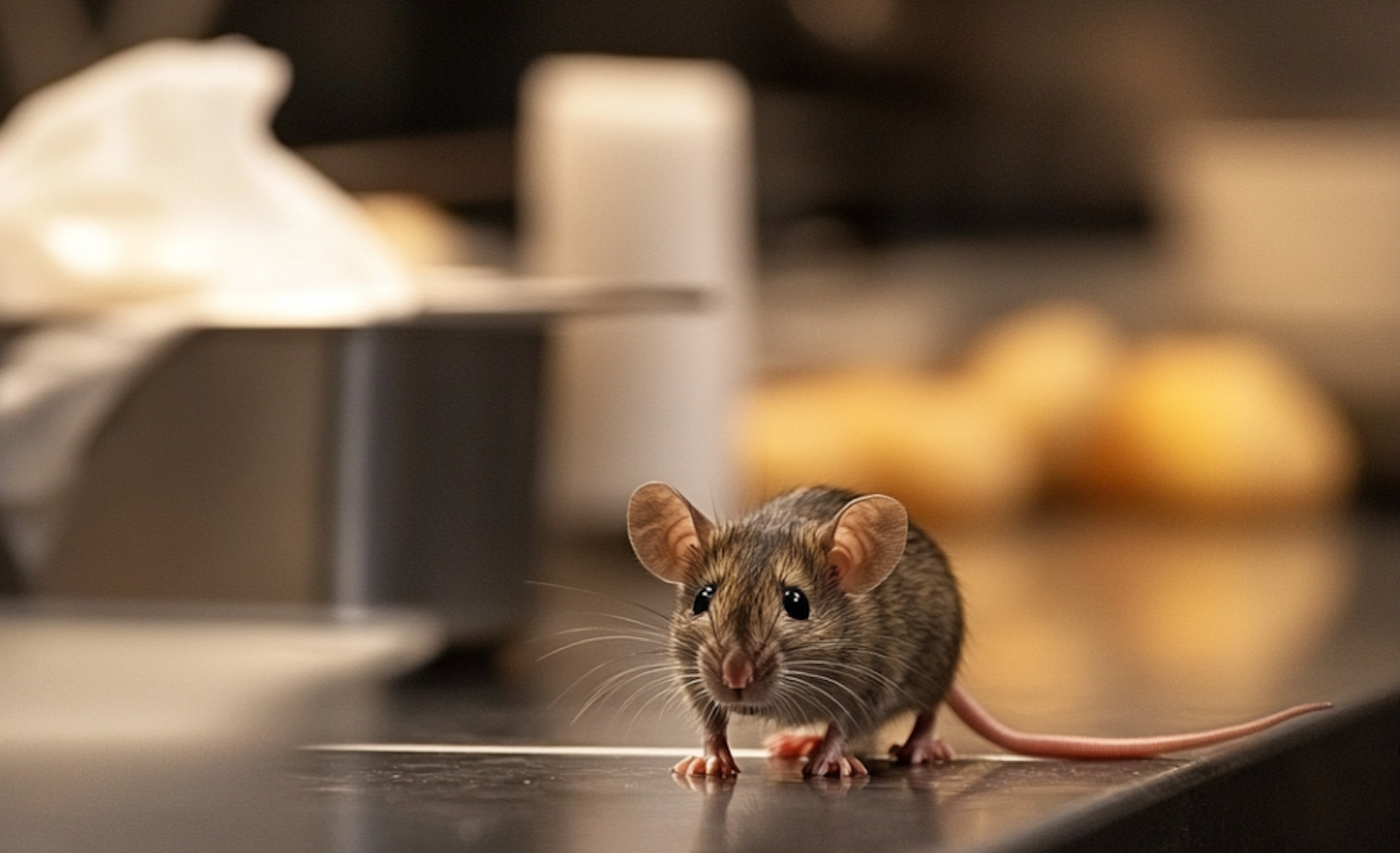As a food-related business owner, your top priority should be your customers’ and employees’ safety and satisfaction. And this means keeping your restaurant pest-free.
A pest invasion creates financial problems and could lead to irrefutable harm to your local reputation and fines from the US Food and Drug Administration.
Having a plan of action is the best way to avoid a business-crushing pest control issue and keep your customers coming.
To help, we created a 9-step restaurant pest control plan and guide to help you learn about effective restaurant pest control strategies for your Northeast and Southeast Pennsylvania businesses.

The Importance of Restaurant Pest Control
Maintaining a pest-free environment is important for the health and safety of your customers and employees. Common pests in restaurants, such as mice and cockroaches, can carry diseases like salmonella and contaminate food through their droppings.
On the financial side, even a single pest sighting can result in negative reviews, a drop in customers, and potential legal action if a health inspection finds violations.
Due to the volume of food and waste that restaurants and food establishments deal with daily, pest control is not an option–it’s a priority.
Common Regulations Regarding Restaurant Pest Control
Furthermore, on the legal side of your business, maintaining a pest-free environment is a requirement under both local health codes and FDA rules. Some of the most important regulations that restaurants have to follow regarding pest control include:
- FDA Food Code: This code establishes best practices for food safety, including pest control measures to maintain a pest-free establishment.
- Hazard Analysis and Critical Control Points (HACCP): Requires restaurants to identify and mitigate potential food safety hazards, including pests, to avoid disease outbreaks or illness.
- Local Health Department Inspections: Restaurants must pass routine health inspections that often include pest control checks.
- Pesticide Use Regulations: Restaurants that decide to take measures into their own hands must use approved pesticides, and licensed professionals must apply them in accordance with safety guidelines.
- Sanitation Standards: Proper waste disposal, food storage, and cleanliness are essential to prevent pest infestations and comply with health codes.
Failure to comply with these regulations can lead to fines, closure orders, or loss of business licenses. Restaurant owners should always stay updated on local, state, and federal pest control requirements to maintain a safe and compliant establishment.
Common Pests Found in Restaurants
Restaurants provide an ideal habitat for pests due to food, water, and shelter availability. Some of the most common pests found in food establishments are bound to include:
- Rodents (Mice and Rats): These small and nimble pests often enter the kitchen through exterior openings or even wide-open backdoors. Once inside, they can chew through wires, contaminate food, and leave droppings that spread bacteria on surfaces.
- Cockroaches: These filthy creatures thrive in warm, moist environments and can spread bacteria such as Salmonella and E. coli. They are nocturnal, so you will need to perform an inspection at night.
- Flies: Fruit flies are extremely common in restaurants during the summer and can spread disease if they come in contact with food or people. To combat infestations, common food sanitation measures and fly traps should be set up.
- Ants: Common black ants are attracted to food crumbs and sugary substances. If unchecked, they can quickly grow out of control.
- Stored Product Pests (Beetles, Moths, Weevils): Found in grains, flour, and other stored food products, these pests can damage food and storage containers, leading to heavy financial losses.
Understanding what types of pests frequently infest restaurants can help owners and exterminators devise a plan to target these pests.
Signs of an Infestation
Early detection is essential to preventing a full-blown infestation. While pest sightings will be the most obvious sign, there are a few additional ones that workers and managers should keep an eye on.
- Droppings and urine stains: Often found in pantries, under sinks, and near food storage areas.
- Gnaw marks or holes in packaging: Evidence of rodents or ants chewing through food containers.
- Unusual odors: A musty or foul smell may indicate the presence of cockroaches or rodents.
- Visible pests: Seeing a single cockroach, mouse, or fly could mean there are many more hidden, as these tend to be social creatures.
- Damaged food products: Any signs of food contamination should be addressed immediately, and all damaged products should be disposed of.
- Grease trails or smudge marks: Rodents often leave dark streaks along baseboards and walls, indicating their presence.

9 Expert Restaurant Pest Control Tips
Restaurant pest control requires many different facets, from preventative measures to active barrier sprays. This 9-step restaurant pest control guide will ensure your restaurant remains pest-free and safe.
1. Keep Track of Your Problem Areas
Pests can invade from just about anywhere, but the best way to combat a problem is to identify where they are living or coming from. Depending on the type of creature, their safe haven can be a number of different places.
For example, some insects are drawn to the warmth of lighting, so be careful about where you place your lighting, especially if you have an outdoor dining area.
Additionally, dumpsters are a smorgasbord for pests like mice, rats, and wildlife. They should be located away from the building and sealed tight to prevent scavenging.
Of course, pests don’t have to be attracted to lighting or your trash; they could just mosey through the front door. Any opening can be a problem: windows, doors, vents, etc. Be sure the gaps are sealed, floors are clean, and all entryways are closed when not being used.
2. Keep a Pristine Interior
To control pests inside, it is important to keep your restaurant clean. The dining area should be cleaned daily, and any food residue should be removed. This also extends to food prep and cleaning stations. Additionally, no food should be left standing in the kitchen, food prep, or open storage areas.
Trash cans and bins should have liners and a tight-fitting top. They should also be emptied daily to remove any potential pest hot spots from your property. If not cleaned properly, floor drains can also be an issue. The best way to keep pests out is to follow the FDA’s HACCP (Hazard Analysis and Critical Control Points) principles.
3. Know Your Enemy
If you discover you have an insect or rodent problem, the next step you take should be identifying the culprit. Your plan is dependent on the type of infestation. A rodent problem can be dangerous. Not only do customers experience repulsion, but they can contract diseases like Salmonella, Listeria, or E. Coli. Rodent droppings can also be hazardous and cause major property damage.
Insects like cockroaches and flies can spread diseases, contaminate food, and create major problems as well. Once you identify your pest problem, you can take the steps to fix it. However, keep in mind not all pests will be found out in the open.
4. Check Your Storage
As a restaurant purveyor, it is imperative to check and clean your storage regularly. Routinely inspect your storage bins and throw out anything past the expiration date. Old or poorly kept food can attract all manner of insects, such as beetles, weevils, moths, and mites.
The storage area is also a breeding ground for bacteria, especially near refrigeration units. Anything that may be infested could risk cross-contamination with good food in your storage. Be vigilant and check your storage often.
5. Monitor Areas
It isn’t enough just to check these problem areas once or twice a year. Pest control can get out of hand very quickly. The best action is preventative action. Make it a point to check the problem areas to see what needs updating and to be sure everything is clean. Additionally, you want to be sure everything is up to code in case of a surprise inspection.
If you’ve had previous infestations, come back to those areas more frequently to ensure that the problem has been taken care of. If you want to remain pest-free, the bottom line is that you must take action.
6. Survey the Damage
If you do discover a pest problem, do not hesitate. Act quickly; a pest problem in the foodservice industry can mean ruin should the health department find out before you do. What kind of pest problem do you have? How large is it? Determine the size of the problem, contact a pest control specialist, and remove all contaminated food. You can’t be too careful when handling pest problems.
Keeping things pristine is key to restaurant pest control
7. Build a Plan of Action
Depending on the infestation, have a plan of action to respond efficiently. Remove all contaminated food and sanitize affected areas. If pesticides are needed, follow the rules and regulations. Have a trained official handle the poisonous materials and keep them away from any area that may be near food. If needed, contact a pest control specialist. It is best to deal with pest complaints and reports quickly.
8. Follow the Food Hygiene Law
If you follow Food Hygiene laws, you should be able to avoid an infestation. Follow regulations regarding food safety and take preventative measures against cross-contamination. Keep areas clean, monitor all activity, and ensure that all employees are properly trained on food storage and safety.
9. HACCP and Food Safety Legislation
The best defense against a pest problem is prevention and knowledge. Keep current on the most recent rules and regulations set by the U.S. Food and Drug Administration. Food law requires businesses to follow the HACCP principles to ensure people are safe. Ensure everything is clean and up to code, especially when handling food and storage.
Above all else, remain vigilant. Follow these tips to keep your business safe, clean, and running pest-free.
FAQs
How often should a restaurant have a pest control inspection?
It is recommended that a professional pest control inspection be performed at least once a month. However, more frequent inspections may be necessary if the restaurant has a history of pest problems.
Can I handle pest control on my own, or do I need a professional service?
While maintaining cleanliness and sealing entry points can help prevent pests, a professional pest control service is essential for eliminating infestations and ensuring compliance with health regulations.
What should I do if a health inspector finds pests in my restaurant?
Address the issue immediately by hiring a licensed pest control service, thoroughly cleaning the affected areas, and implementing preventive measures to avoid future infestations.



























